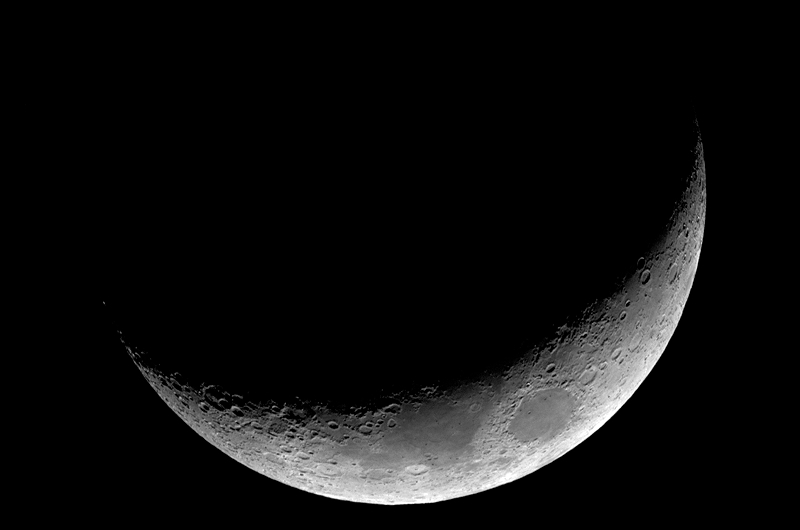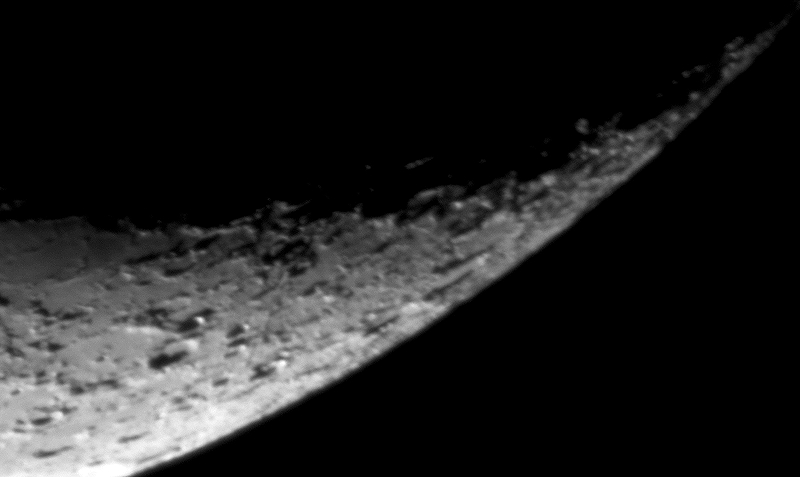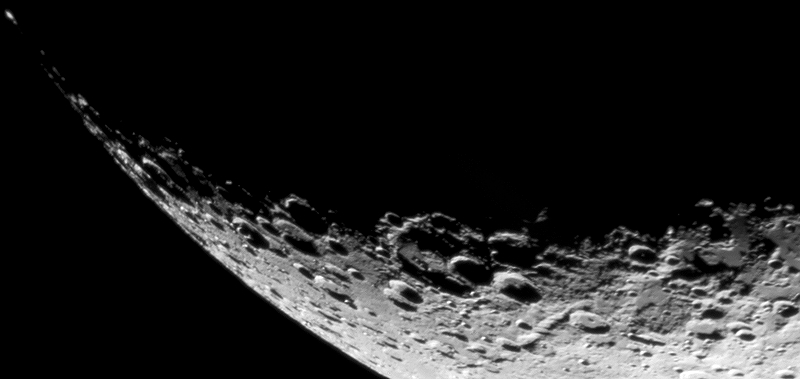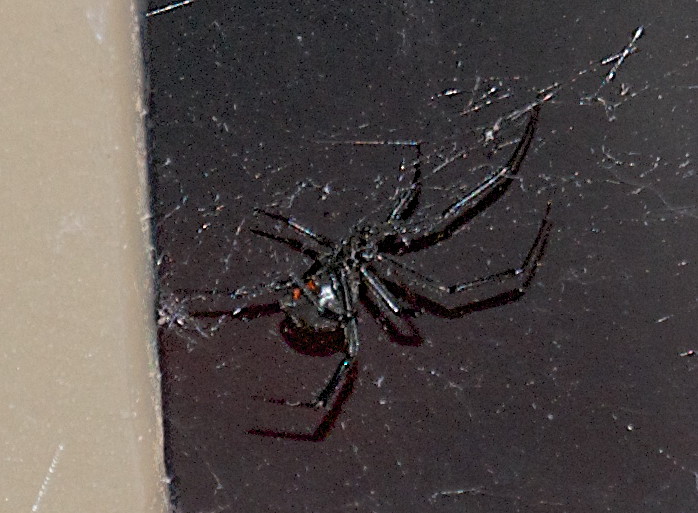
More Observing with 2" 24mm UWA Eyepiece,
Moon, Observatory Resident
Posted: 15 April 2013
The observatory was opened on Sunday, 14 April 2013, at 1833 MST, 79°F. The sky was clear but a strong wind was blowing. I delayed opening the dome, but did set up a chair on the observatory patio for use later in the night. The dome was opened at 1843 MST and the telescope was powered on at 1855 MST, sunset, with still a strong breeze blowing.
I viewed the crescent moon using my new Meade 2" 99% Reflectivity Mirror Diagonal and 2" 24mm Ultra-Wide Angle (UWA) eyepiece (83X). The view was nice. The entire lunar disk was visible, with good details visible along the terminator. Switched to the Explore Scientific 2" 9mm 100° eyepiece (222X). Seeing was not good (not helped by the wind), but there were some great sights along the terminator, especially in the south pole region.
I mounted the D7000 DSLR at prime focus of the 8" LX200-ACF using the 2" visual back (with the 1.25" adapter) and captured this image of the moon:

I added the Meade 3X TeleXtender and captured these views of the north (top, blurred due to the wind) and south (bottom) polar regions using the "Hat Trick" Method, ISO 100, cropped from the full-frame images:


At 1929 MST, I resumed lunar observing with the 2" 9mm eyepiece. I took a quick look at Jupiter, 222X. The four Galilean Moons were visible. I then returned to the moon for more observing. By 1938 MST, the strong breezes had subsided somewhat. I switched back to the 2" 24mm UWA eyepiece (83X) to observe the moon; Earthshine was lovely in the full-disk view in the eyepiece.
I began doing some DSO observing at 1951 MST using the 2" 24mm UWA eyepiece. First observed was M1, the Crab Nebula. It was easily seen even though the moon was nearby. Then M42, the Great Orion Nebula; awesome view in the 2" eyepiece. I then slewed to M45, the Pleiades. No nebulosity was visible in the 24mm eyepiece due to its low altitude and the bright nearby moon, but the stars presented a lovely view. Next was the Double Cluster; both open star clusters were in the same field-of-view (FOV). I then observed the Leo Triplet of Galaxies (M65, M66, NGC3628), all in the same FOV with the 2" 24mm UWA eyepiece. I tried to see the supernova SN 2013am in M65 with 24mm and 9mm eyepieces. No joy.
By now, the wind was getting stronger again. Viewed M51, the Whirlpool Galaxy, 83X. The view was good, unlike on the previous night when clouds hampered the viewing. Spiral structure and the arm between the galaxies were visible. Then viewed the M81 and M82 galaxies, both in the same FOV with the 2" 24mm eyepiece. Some details were visible in M82. The last galaxy observed this night was M101. The spiral structure was visible in most of the 2" 24mm UWA FOV.
I then observed some open star clusters using the 2" 24mm UWA eyepiece: M44 (the Praesepe), M34, and M36. This medium power wide angle eyepiece brings new enjoyment to observing open star clusters.
Next observed with both the 2" 24mm and 2" 9mm eyepieces was the Eskimo Nebula. Lots of structure was visible using the 9mm eyepiece (222X). I returned to M42 for more viewing with 24mm and 9mm eyepieces. Just great!
The wind continued to get stronger and was beginning to be a real problem. It blew over my chair on the patio. I decided to defer my planned additional images and end the session. As I was closing the observatory, I noticed this resident of the observatory:

Yes, a Black Widow Spider.
The observatory was closed at 2051 MST, 64°F. Wind warnings are up for my area for the next two days (and nights).
Comments are welcome; use the Comments section below, or you can Email Me. Thanks.
Go to the previous report.
Return to the Cassiopeia Observatory Home Page.